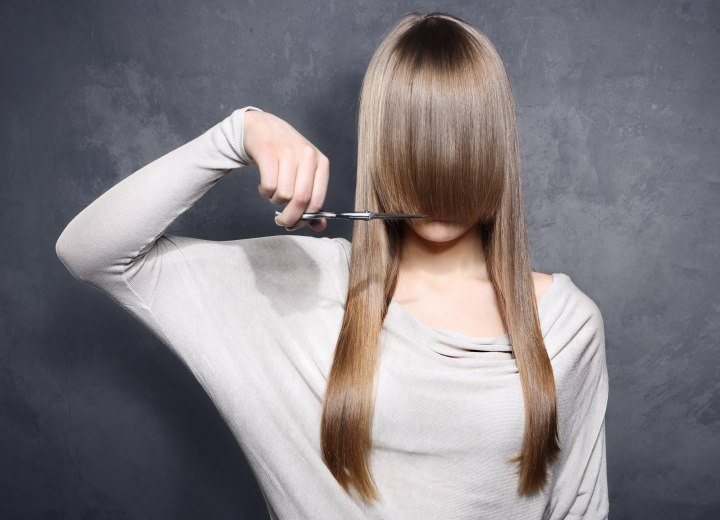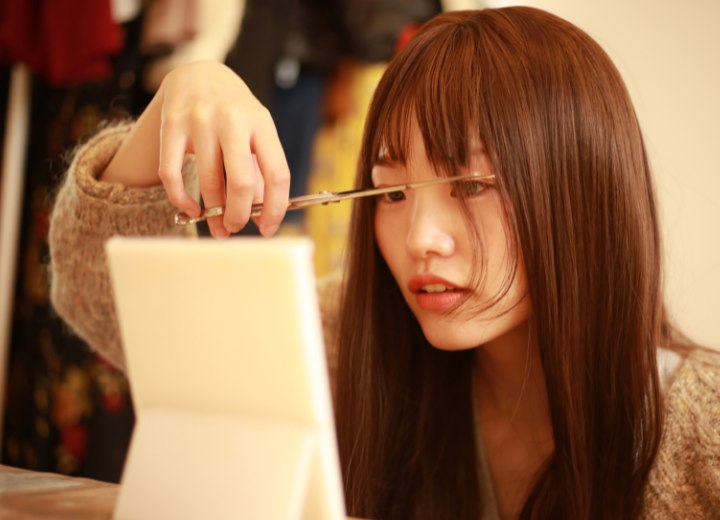How to Cut a Fringe

While virtually anyone can have a fringe (bangs) to their hairstyle, the most important thing to remember is how the concept of a fringe is defined. A person’s hair texture and wave pattern are going to be major determining factors in the shape that any bangs take in a hairstyle. Therefore, it is important that any individual contemplating incorporating a fringe into their hairstyle be aware of what their hair is most likely to do.
Too often, people have tried to add a fringe to their existing look with disastrous results. And even when the results don't qualify as a disaster, they can very often be unpleasant for the individual, who was anticipating a different outcome. Because of this, there is one major rule that MUST BE OBSERVED when contemplating the addition of a fringe area:
It sounds simple, but just because you have been styling it all your life doesn’t necessarily mean you understand all that it can or will do in any given situation. And frankly, those individuals who do fully understand the limitations and needs of their hair in order to make it behave the way they want wouldn't be asking about how to incorporate a fringe. They would either know how to make it work, or know that it simply doesn't fit them.
So, in an attempt to help those who aren’t as well-versed in their own hair, let’s take a look at the concept of the fringe, the problems that can be inherent in various hair types and solutions that can be adapted in many cases. We’ll start with defining "fringe."
What is a fringe?
At its simplest, a fringe (bangs) is an area of the hair at the forehead that is cut shorter than the rest of the style. This is often done to provide a framing feature to the face and minimize features that might otherwise be too prominent or unappealing. Sometimes it is simply a matter of aesthetic preference. A fringe can offer a youthful look, or turn an otherwise simple hairstyle into something softer and more alluring.

It may even be a long, angle-cut affair that sweeps to one side or another to partially mask a portion of the face for a bit of flair or dramatic effect. All of these would be a fringe, and would be defined as such based solely on their clear differentiation from the main body of the hairstyle.
Fringe Lengths
The length of the bangs is generally a matter of aesthetic preference, but often needs to be adapted to suit various hair types and problem traits. Ignoring the needs of these types and traits can lead to numerous problems that at the very least would require a lot of extra effort in styling to adjust while the issues resolve themselves.
Hair Types and Fringe Issues
Curly Hair
As mentioned above, the hair type in question has a significant impact on the details of any fringe that can or should be attempted. And one of the most challenging hair types for incorporating fringes is the very curly hair type.
There is a reason why most women with very curly hair wear their hair very simply when they opt for a longer style. Those women have often been the victim of an attempt to "add a fringe" that resulted in the creation of a puff-ball on their forehead. This happens as a result of the aforementioned ignorance of what the hair is likely to do.
Even curly hair that hangs in smooth, beautiful ringlets and appears to be more relaxed in its level of curl is deceptive, since the elongation of the curl is due largely to the weight of the hair pulling on the natural curl.
Continue reading ... Last Page
